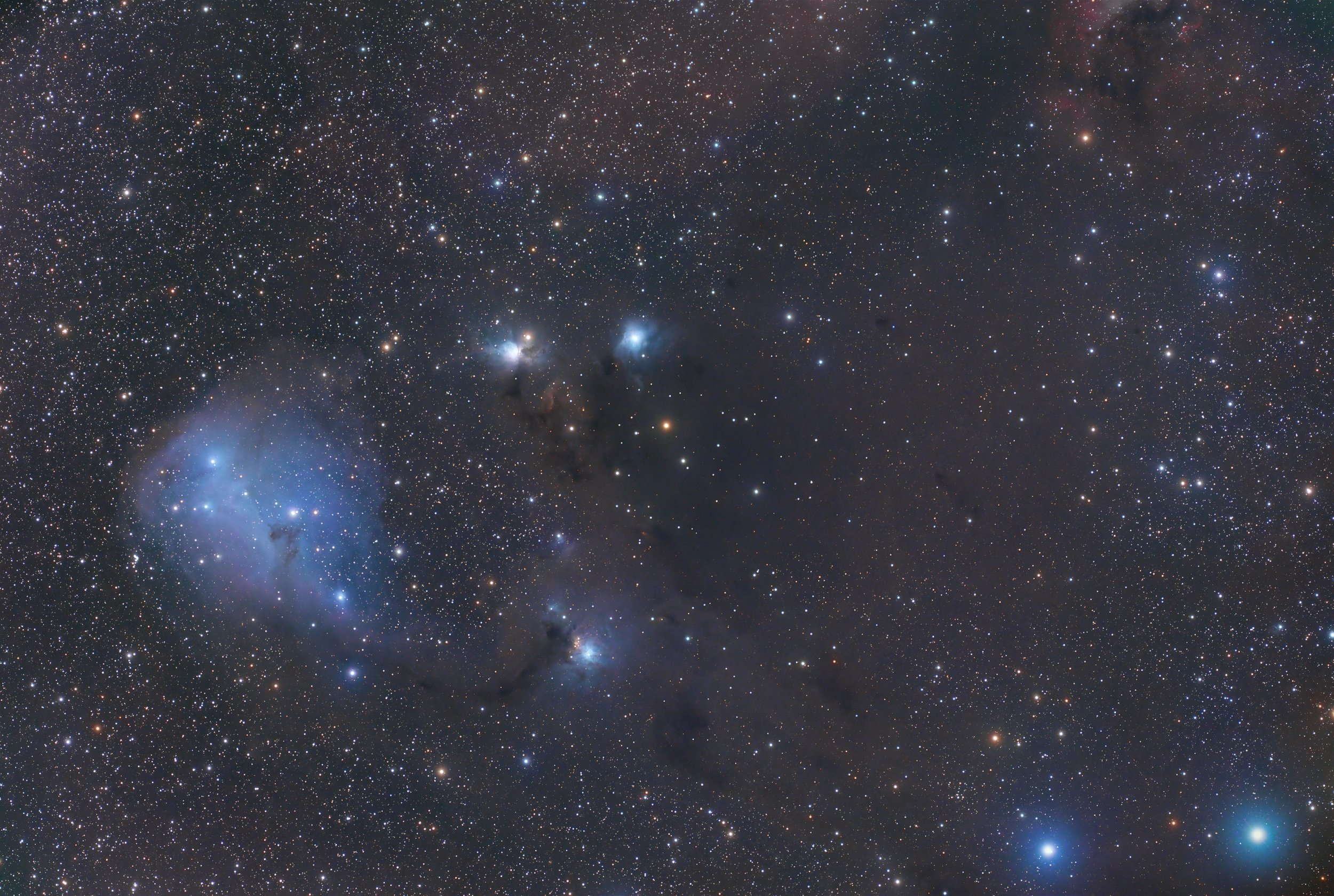
AAPOD2 Image Archives
IC405-IC410 LRVB
IC 405, the Flaming Star Nebula, and IC 410, home to the Tadpoles, form a stunning pair of emission and reflection nebulae in the constellation Auriga, approximately 1,500 and 12,000 light-years away, respectively. IC 405 glows in rich reds and blues as ultraviolet radiation from the hot, massive star AE Aurigae excites hydrogen gas and scatters starlight off surrounding dust. Meanwhile, IC 410 showcases a pair of dense, tadpole-shaped structures—stellar nurseries shaped by intense stellar winds—set against the glowing hydrogen background.
Captured under the skies of Provence-Alpes-Côte d’Azur, France, these nebulae highlight the dramatic interplay between young stars and the interstellar medium. Their contrasting hues and forms—IC 405’s flowing, fiery streaks versus IC 410’s compact, textured clusters—offer a vivid portrait of stellar evolution. Together, they exemplify the creativity of the cosmos, crafting beauty from chaos in the vast expanse of Auriga.
IC 410
This image captures IC 410, also known as the Tadpole Nebula, located in the constellation Auriga. A glowing region of ionized hydrogen, this emission nebula surrounds the open star cluster NGC 1893, a young cluster whose stars power the nebula's illumination.
The "tadpoles" themselves—two dense, dusty structures stretching roughly 10 light-years each—are regions of concentrated gas and dust, shaped by stellar winds and radiation. These structures are likely sites of ongoing star formation, hidden within their dense cocoons.
The image displays a rich palette of colors, showcasing hydrogen-alpha (red), oxygen (blue), and sulfur (gold) emissions, bringing out the intricate textures and dramatic interplay of light and shadow within the nebula.
IC 410 resides approximately 12,000 light-years away and spans about 100 light-years across. This vibrant celestial portrait reveals the complex dynamics of star formation and the incredible power of young, massive stars.
flame star IC405 to the ′′ pond ′′ IC410,
From the flame star IC405 to the ′′ pond ′′ IC410, the celestial area in the Giffus is filled with ionized aluminum clouds, the original tone is dominated by red -- until a comet, C / 2020 M3 ATLAS, Dragging the short tail to break into here, bringing a piece of green.
In order to shoot the comet, QHY268C was specially adjusted to high gain mode, Gain 56, Offset 10, with a 100-second short exposure to prevent the comet from dragging. As a result, the comet was captured, but the camera hung up, the infinite card read out, and had to return to the factory for repair. Now, even the equatorial meter is starting to go crazy for unknown reasons.
It seems that the comet is really a broom star......
Location: Hebei Kangbo Galaxy Observatory
Taken on December 9-10, 2020
Telescope: 150 2.8 HNT
Camera: QHY268c
Equator: Eaton iOptron CEM70
Guide: QHYCCD OAG-M
Guide Star Camera: QHY5L-II-M
Number of sheets taken: 206
Single exposure: 100 seconds
Cumulative exposure: 5.7 hours
APT: APT
PixInsight, PhotoShop
Copyright: Steed Yu




